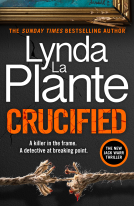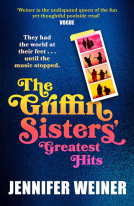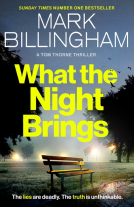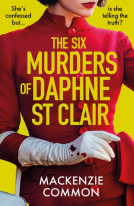
Americanaland
Where Country & Western Met Rock 'n' Roll
by John Milward
This title was previously available on NetGalley and is now archived.
Send NetGalley books directly to your Kindle or Kindle app
1
To read on a Kindle or Kindle app, please add kindle@netgalley.com as an approved email address to receive files in your Amazon account. Click here for step-by-step instructions.
2
Also find your Kindle email address within your Amazon account, and enter it here.
Pub Date 3 Aug 2021 | Archive Date 10 Aug 2021
Talking about this book? Use #Americanaland #NetGalley. More hashtag tips!
Description
With a claim on artists from Jimmie Rodgers to Jason Isbell, Americana can be hard to define, but you know it when you hear it. John Milward’s Americanaland is filled with the enduring performers and vivid stories that are at the heart of Americana. At base a hybrid of rock and country, Americana is also infused with folk, blues, R&B, bluegrass, and other types of roots music. Performers like Bob Dylan, Johnny Cash, Ray Charles, and Gram Parsons used these ingredients to create influential music that took well-established genres down exciting new roads. The name Americana was coined in the 1990s to describe similarly inclined artists like Emmylou Harris, Steve Earle, and Wilco. Today, Brandi Carlile and I’m With Her are among the musicians carrying the genre into the twenty-first century.
Essential and engaging, Americanaland chronicles the evolution and resonance of this ever-changing amalgam of American music. Margie Greve’s hand-embroidered color portraits offer a portfolio of the pioneers and contemporary practitioners of Americana.
Advance Praise
"Concise, lively, and informative, with many colorful anecdotes adding intriguing detail. Milward's deep knowledge of music history and expertise on roots-music genres make Americanaland an essential addition to the music book canon."--Holly George-Warren, author of Janis: Her Life and Music
"There’s a common thread that runs through the great patchwork quilt that's come to be known as Americana Music. John Milward has artfully followed every stitch of that thread and revealed the story behind every patch. In doing so he’s made huge strides in giving this rich genre the legitimacy it deserves."--Larry Campbell
"Encyclopedic. Kaleidoscopic. John Millward [offers an] account of a century of American music culminating in what we now call Americana. Countless stories of those who have brought this music that bubbles up from a bottomless well sunk deep in American soil."--Jim Rooney
Available Editions
| EDITION | Other Format |
| ISBN | 9780252043918 |
| PRICE | US$29.95 (USD) |
| PAGES | 304 |
Links
Featured Reviews
 Vanessa R, Reviewer
Vanessa R, Reviewer
A comprehensive and riveting history of that most eclectic of genres of American music, Americana, offering new insights into the recordings of both household names and lesser known artists
 Rachel C, Librarian
Rachel C, Librarian
While scores of books have been written about Rock and Roll music, African-American soul, R&B, and blues, and country, not much has been written about the offspring of all these genres - Americana. Americanaland gives a good overview of the history of rock, rhythm and blues, and country music, and how they started to intersect in the 50s and then blossom in the 1960s with bands like the Byrds and the Flying Burrito Brothers. Americanaland delves into the life of Gram Parsons, one of the founders of the genre, who called it "cosmic American music" and explains how the music evolved into the Alt-Country or Americana music of today. This is a great starting point for a person who doesn't know much about the genre, but is an enjoyable read even for those of us who do. Highly Recommended,
 Dan O, Bookseller
Dan O, Bookseller
My thanks to NetGalley and the University of Illinois Press for an advanced copy of this new music history.
The genre of music known as Americana can be hard to define. Country based rock, or rock infused country with a soupçon of blues and or jazz, either or could work. However it is easier for the ears to make the determination, if the song sounds like Billy Joel with a steel guitar then it is probably modern country, guitars with autotune that could be modern rock. Live instruments with singers who write their own songs on the the way to an open mike, songs about people places and real things, that is probably Americana.
John Milward in his new book Americanaland: Where Country & Western Met Rock 'n' Roll tries not to define but to give examples of what shaped Americana music and where it came from. Not so much on where it might be going, which makes sense since music today is in flux as never before. Mr. Milward starts way back to the early blues days, moves up to Hank Williams and Earl Scruggs and proceeds to cover all the decades and the major minor players which are quite abit. The book doesn't go to far in depth, songs are mentioned but not really analyzed for what makes that song Americana,and the shadow that Bob Dylan casts is quite large over the landscape.
Also I never knew the importance of fast food bags to musical history. Two different artists with a lack of writing paper used the bags to write lyrics down for songs that later became famous for the artists. There are many more interesting facts and stories in this book, and why I enjoyed it. For a burgeoning music fan, just getting an idea of what is behind the music, or for fans wanting to know more.
 Dubi S, Reviewer
Dubi S, Reviewer
There are two ways to define Americana. The simplest is to differentiate modern practitioners of traditional country and country rock from the contemporary form of commercial country that has dominated since the 1990s -- alt.country, eschewing the conservative and commercial side of the genre in favor of a more authentic roots- and rock-based form.
A broader definition can be quickly culled from the Americana Music Association: "Americana is contemporary music that incorporates elements of various American roots music styles, including country, roots-rock, folk, bluegrass, R&B and blues, resulting in a distinctive roots-oriented sound that lives in a world apart from the pure forms of the genres upon which it may draw."
John Milward subtitled Americanaland to make clear his angle -- C&W meets R'n'R. If that's not enough, he states quite plainly that he has chosen not to include blues influences, not only because he already wrote a book about the blues (Crossroads), but also because blues roots should be taken for granted as underlying all American forms of music. He also points to Merriam-Webster's overly simplistic 12-word definition of Americana as "a genre of American music having roots in early folk and country music" (which did he not notice does not include rock'n'roll?).
So I must thank to NetGalley for an advance copy of Americanaland. For me to provide an honest review begins with being honest about my lack of objectivity -- as a roots guitarist, I've studied with and have otherwise met a number of artists who are among this book's subects, as well as some who should be in this book but aren't (more on that later).
The best thing about Americanaland is how Milward's writing weaves in and out of the various musical influences and personalities much like the music weaves in and out of the roots of Americana. It's a masterful work that traces the threads through early country music, bluegrass, the folk revival, the roots of rock and roll, even a bit of the blues, gospel, and R&B, despite his narrow definition. The mastery remains evident as he winds through various stages of these root forms and the cross-pollination between them that ultimately became Americana.
One result of Milward's narrow definition, especially in leaving out the blues and by extension traditional jazz, is that Americana is portrayed as almost lily white -- too much emphasis on country, even if the Americana side of country is not conservative country. I wouldn't want to suggest that this is by the author's design, but surely Milward is aware that this criticism has been leveled even by its own practitioners -- for example, by Rosanne Cash in a Rolling Stone article about how the blues must fall under the umbrella of Americana in order to acknowledge a broader level of diversity.
Despite the nod to Rhiannon Giddens, we will not find any mention of Keb' Mo or Dom Flemons (although he was part of the Carolina Chocotate Drops with Giddens). But it's not just black artists who are overlooked. Where is Jorma Kaukonen, whose Blue Country Heart album is quintessential Americana featuring an all-star cast of Americana musicians, and whose Fur Peace Ranch guitar camp has become an epicenter for Americana and roots study, again featuring an all-star cast of Americana musicians who have played and/or taught there (I know Milward knows about Jorma and FPR since they are in Crossroads).
Even more egregious is the complete omission of David Bromberg, whose half century body of work constitutes a master class in Americana long pre-dating the coinage of that term. And where are the Allman Brothers and their heirs, Tedeschi Trucks? Hello, Little Feat? They were more than just the inspiration for the Dixie Chicks name. In a book that is mostly a list of artists and songs, there's a whole list of essential artists left out or too lightly mentioned -- if you want to know who they are, just look at the AMA awards list.
There is more to Americana than Dylan, Gram Parsons, Steve Earle, and Wilco -- although I won't argue with the prominence paid to The Band, the original and probably still the best practitioners of the genre. With the amount of space given to these important figures, even when they veered away from Americana, surely Milward could have made room for others.
Finally, I feel that the story is told in reverse. I mean, there's nothing wrong with a linear history that begins with early influences and chronicles how various streams grew into the confluence of Americana over time. But I was already feeling how backwards this approach is when, 80% into the E-book, I read about Larry Campbell's experiences with Dylan and Levon Helm.
Never mind that Milward doesn't get into all the other people Larry worked with (e.g. Jorma and Bromberg, among many others), or that Larry and Teresa's first two albums are absolute gems of Americana that showcase all the genres via original songs and covers, or how underappreciated Teresa's pure country voice is compared to other singers. But the story would have made so much more sense if it started with current practitioners of Americana like them and traced the roots via their influences and the people they grew up with.
Overall, I average Milward's five-star writing, along with just the pleasure of having a book devoted to Americana, with three stars for these problems with approach, definition, and scope, for a four-star rating. This book will probably appeal to fans of country, country rock, and Americana, but will be probably leave some devotees like me wanting for more.
I am a HUGE music fan so this was definitely the book for me! I love Americana music and if you do as well, this is a must-read!!!
 Reviewer 800812
Reviewer 800812
Americanaland
Where Country & Western Meet Rock 'n' Roll
author: John Milward
portraits by: Margie Greve
University of Illinois Press
One thing I know for sure about musical history is that I still have so much to learn! The engaging book, Americanaland: Where Country & Western Meet Rock 'n' Roll, offered me stellar "coursework" on my fun quest for knowledge, through each chapter written by John Milward. With over forty years of writing about music, Milward provides respectable in-depth insight about the roots of Americana music. This book is a well-written history on all aspects of Americana, including the artists, the genres, the songs and songwriting, the places, the tragedies, and the triumphs.
The introduction includes a summary of Milward's attendance at the September 2017 Americanafest, a conference and festival for lovers of Americana music. His descriptions of the performances he attended were captivating. Although I did not attend the full conference, I felt immediately drawn in as I happened to be in Nashville for a girl's trip at this time and caught two performances at the Country Music Hall of Fame. Music lovers will certainly find plenty of their own moments of connection as they read this book, based on their journeys of music appreciation throughout their lives.
We are taken to Bristol, on the border of Tennessee and Virginia, for the 1927 music sessions introduced by Jimmie Rodgers and the Carter family. The stories continue to the present. Just a small few of the many artists written about are Hank Williams, Bob Dylan, Chuck Berry, Elvis Presley, Joni Mitchell, Dolly Parton, Gram Parsons, Linda Ronstadt, John Prine, and Jason Isbell. Music festivals, tours, concerts, and television shows over the years add to the cultural interest. The relationships between the musical artists is interesting, as well as the genres and how they overlap, intertwine and influence each other.
Since I read an advance reader's copy, it did not have the portraits of musical artists provided by Margie Greve. I did look them up on her media pages, and they are outstanding and add even more artistic depth to Americanaland.
Thank you to Net Galley and University of Illinois Press for the advance reader's copy and opportunity to provide my unbiased review.
#Americanaland #NetGalley
 Timothy E, Reviewer
Timothy E, Reviewer
AMERICANALAND: WHERE COUNTRY WESTERN MET ROCK ‘N’ ROLL, is a complete history of the history of American music that includes the genres included in the title along with blues, R&B, pop & jazz that have all played an important part of the development of what is now known as Americana.
Most importantly it features in-depth bios of the artists whose songs, albums, and influences helped to provide the framework of what has been followed up by early and later generations of artists and songwriters who’ve been the foundation of what makes this genre recognizable and appreciated due to the influence it has had on all other forms of music created today.
Recommended to all musicians, but especially those most associated with this genre including Steve Earl, Emmylou Harris, Nick Lowe, Townes Van Zandt, and more than can be named here.
5 stars.
 Emma L, Reviewer
Emma L, Reviewer
I have always loved music – growing up, my tastes were varied – a bit of pop, a bit of rock, a bit of folk, and a lot of alternative. They never included country music, at least until I moved to the states in the early ’90’s. Then, the friends I made were very into the ‘sassy female’ variety and I got hooked. Slowly, though my tastes have changed (even if I still lean towards female singers) into what is called Americana. Which is why I was really excited to read Americanaland so I could figure out just where this real mix of styles came from.
And find out I did, going right back to the beginning with the Carter family before taking a bit of a roller-coaster journey through where the music went next. I say roller-coaster because that is how I felt reading this book. It was fast. Not as in a quick read, but as in the pace of the writing. It was relentless, through names, places, and songs at me before I really had chance to process what I was actually reading.
Even now I’ve finished, I’m not sure how I feel about this. Exhausted? Exhilarated? Overwhelmed by how many artists I now feel the urge to listen to (there’ll be a playlist on Spotify soon I’m sure)? All of these things. It reminded me of reading Roots, Radicals, and Rockers by Billy Bragg a few years ago. I felt the passion of the author and it carried me along, meaning I enjoyed the book too. But at the same time, it was all a bit too much. I felt like I didn’t know enough.
So, if you love Americana and know a bit more about it than I did when I started this book, I would say it is definitely for you. If you are at the start of your journey – maybe go for something else first (or maybe read a few magazine articles). 3.5/5 stars.
Readers who liked this book also liked:
Jennifer Weiner
General Fiction (Adult), New Adult, Women's Fiction


















